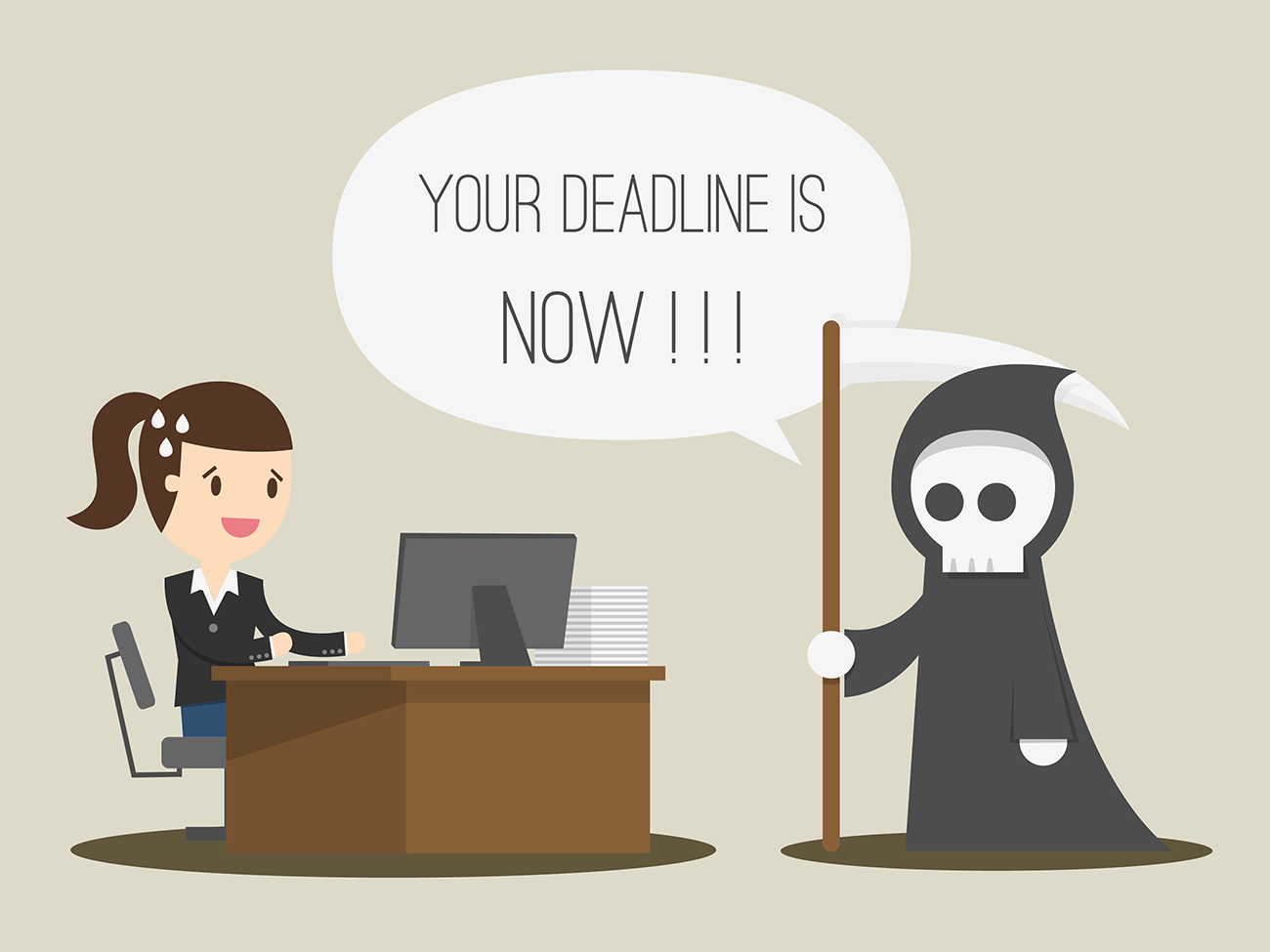Student Loan Repayment Plans: Know What Works for You
For most graduates, finishing college means finding ways to repay student loans. While others get by with their payments, many need further assistance to pay off their debt.
The rising costs of living often make it difficult to pay student loans. The New York Federal Reserve Bank stated student debt surpassed credit cards and auto loans in 2018, making it second to mortgages. By September 2019, people owed about $1.638 trillion in student loans.
To aid struggling borrowers, the government provides several repayment options, helping even low-income individuals pay student debt. Borrowers can choose from eight different repayment options ranging from fixed standard repayment, graduated repayment and income-driven repayment.

Some of these plans come with extended terms and lower monthly payments. However, take note that it's still more favorable to pay off debt as soon as you can. The longer it takes to pay a loan, the more interest accrues, increasing its overall cost.
8 Types of Student Loan Repayment Plans
There are similarities between different student loan repayment programs. However, each option has a distinct feature that can work well for you. Find out what plans you qualify for and determine which one suits your needs.
If you are unable to choose a repayment plan, a loan servicer will automatically place you under a Standard Repayment Plan.
Standard Repayment Plan

This plan features fixed monthly payments for 10 years. While it imposes higher monthly payments compared to other plans, it generally allows you to pay less interest over the life of the loan.
The Standard Repayment Plan is ideal for individuals with a stable source of income who can afford fixed payments continuously. It is the best option if you want to pay off your student debt in the fastest possible time.
However, this repayment plan is not ideal for individuals seeking Public Service Loan Forgiveness (PSLF). If you experience job loss or any significant decrease in income, you will likely struggle to pay your loan. Consider taking a different plan if you need more time to gather income.
Graduated Repayment Plan
A Graduated Repayment Plan provides lower monthly payments in the first few years of the loan, increasing every 2 years. This loan is also set within a pay period of 10 years.
Graduated Repayment is ideal for low-income borrowers who are anticipating steady financial growth. Since payments rise gradually, new graduates should be able to shoulder the cost. It's also a good plan if you wish to pay off your student debt in the shortest possible time.
However, payments in the first few years of this plan will go towards the interest instead of the principal. This means you'll pay slightly more on interest over the life of the loan.
Graduated Repayment is also not for borrowers asking for Public Service Loan Forgiveness. If you do not earn as much over the years, or experience job loss, it can strain your finances especially towards the end of the term.
Borrowers are qualified to take both Standard Repayment and Graduated Repayment plans if they have the following loans from the Direct Loan Program and the Federal Family Education Loan (FFEL) Program:
- Direct Subsidized Loans
- Direct Unsubsidized Loans
- Direct PLUS Loans
- Direct Consolidation Loans
- Subsidized Federal Stafford Loans
- Unsubsidized Federal Stafford Loans
- FFEL PLUS Loans
- FFEL Consolidation Loans
*No new loans have been made in the FFEL Program after July 1, 2010.
Extended Repayment Plans
This type of plan allows you to prolong your payment duration up to 25 years instead of 10. People with high income laden with many financial responsibilities may opt for this arrangement. Monthly payments may also be fixed or graduated, depending on your preference.
For the Extended Graduated Plan, monthly payments are lower at the beginning, which increases every 2 years. Again, take note that the first few payments will go towards the interest instead of the principal.
Loans under Extended Repayment typically have lower monthly payments compared to Standard Repayment and Graduated Repayment plans. But the lower monthly payments also mean you spend more on interest by the end of the term.
Furthermore, this program is not available for all borrowers. Only individuals with a total loan balance of over $30,000 in either FFEL or Direct Loans (but not a combination of both) are eligible for this type of plan.
Income-Driven Repayment Plans

The U.S. Department of Education states that Income-Driven Repayment Plans are made affordable based on people's income and family size. Under this plan, student loans can be paid within a duration of 20 to 25 years.
There are 3 Types of Income-Driven Repayment Plans:
- Revised Pay as You Earn Repayment Plan (PAYE)
- Income-Based Repayment Plan (IBR)
- Income-Contingent Repayment Plan (ICR)
These programs are best for low-income individuals with very high loan balances, allowing them to pay monthly fees according to their financial capabilities.
Some individuals even qualify for no monthly payments. Your payment decreases when your income is low, and increases accordingly when your earnings grow.
Income-Driven Repayment offers the right plans for people seeking Public Service Loan Forgiveness. This means that any unpaid balance will be forgiven by the government following the end of the repayment period.
Take note, however, that your loan may only be forgiven after a number of continuous qualifying payments.
As for eligibility, the rules vary. But generally, qualifying for an Income-Driven plan is based on loan balance, type of loan, income and family size.
Application requires providing income tax information such as your tax return, after which you are expected to submit your annual tax information to retain the plan. You must certify your information every year to continue receiving reduced payments.
Below are the specific features for each Income-Driven Repayment Plan:
Revised Pay as You Earn Repayment Plan (REPAYE)
REPAYE plans feature payments that do not go beyond 10% of a borrower's ‘discretionary income.' For this program, discretionary income is defined as the difference between an individual's annual income and 150% of the poverty guideline according to their state and family size.
This plan is suited for people with high loan balances and a moderate income. If a you earn more, monthly payments under REPAYE might be higher compared to other income-driven plans. On the other hand, monthly payments decrease with lowered income, keeping your payments affordable.
REPAYE Qualifications
To qualify, you must have a direct loan. Applicants are not required to submit proof of ‘financial hardship' (this is mandatory in other income-driven plans).
For married individuals, their spouse's income and federal student loan debt is also calculated into their monthly payment, regardless of their tax filing status. However, there is an exception. Borrowers who can prove they are separated or cannot access their spouse's income are exempted.
REPAYE Forgiveness Conditions
For undergraduate student loans, the repayment period is set to 20 years after which the unpaid balance will be forgiven. If you have graduate student loans, all your student loans including undergraduate loans will be forgiven after 25 years.
What Happens If You Don't Renew REPAYE?
If you fail to renew by the deadline, you'll be placed under the REPAYE Alternative repayment plan. Take note: Payments under this plan do not count toward Public Service Loan Forgiveness.
Want to leave REPAYE? Any unpaid balance that has accrued interest will be capitalized (added to the principal balance of your loans).
REPAYE Alternative Repayment Plan
For this plan, the payment duration is less than 10 years, or the number of years left on your 20 to 25-year REPAYE plan. The monthly payment will then be a fixed amount, which will pay your loan in full for the rest of the payment period.
The payment duration is set to 20 years only for undergraduate loans. For instance, if you've been on REPAYE for 4 years, you will then have 16 years left in your repayment period. Because 16 years is more than 10 years, your repayment term would be a fixed payment during a period of 10 years.
What if you decide to go back to the REPAYE program? Your monthly payment amount may be higher. Monthly payments may increase if your payment, while not in REPAYE, was less than what you would have paid if you were in REPAYE.
Pay as You Earn Repayment Plan (PAYE)
Under this plan, your monthly payments will not exceed 10% of your ‘discretionary income' (same definition in REPAYE) during times of financial hardship. You can maintain this as long as you renew your payment plan every year. The payment period is set to 20 years.
The Pay as You Earn Repayment Plan generally allows lower monthly payments compared to the Standard Repayment plan. Under this arrangement, your monthly payments will also be reduced if your income decreases. The good news is your monthly payments in the PAYE plan will be capped at the Standard Payment Plan level, even if you earn more in the future.
However, the prolonged payment plan also means you'll pay more on interest by the end of the payment duration.
PAYE Qualifications
This plan is for direct loans only, with requirements including proof of financial hardship. You are eligible if you are a considered a ‘new borrower' or if your monthly payment under the PAYE plan is lower than what you'd pay under the Standard Repayment plan.
For married couples, if you filed taxes jointly, your partner's income and federal student loan debt will be factored into your monthly payment.
Furthermore, a borrower is eligible if they have no outstanding balance on a Direct FFEL as of October 1, 2007, or no outstanding balance on the type of loan or received a new loan after October 1, 2007. They are also qualified if they have received disbursement of a Direct subsidized, Direct unsubsidized, or student Direct Grad PLUS loan on or after October 1, 2011.
PAYE Forgiveness Conditions
If you have unpaid balance after making 20 years of qualifying payments, your loans with be forgiven.
What Happens If You Don't Renew PAYE?
If you do not renew your plan by the deadline, your payments will increase. Unsettled interest which has accrued may also be capitalized.
Income-Based Repayment Plan (IBR)
For new borrowers on or after July 1, 2014, the IBR plan sets monthly payments that will not go beyond 10% of their discretionary income (as defined in the REPAYE and PAYE programs). As for all other borrowers, monthly payments will not exceed 15% of their discretionary income.
This plan is ideal for individuals with high loan balances who prefer lower monthly payments. But remember, lower monthly payments mean you spend more on interest in the long term. Like the previous income-driven plans, your monthly payments will go down if your income decreases.
Under the IBR plan, the repayment duration is 20 years for new borrowers, which include those who have no new balance or did not receive a new disbursement after July 1, 2014. All other borrowers have a repayment duration of 25 years.
The extended pay period usually results in spending more in interest compared to shorter repayment plans.
IBR Qualifications
This plan is for individuals with Direct loans and FFEL, requiring proof of financial hardship. If you are married with taxes filed jointly with your spouse, your partner's income and federal student loan debt will be calculated into your monthly payment.
What Happens If You Don't Renew IBR?
You must reconfirm your income information every year. Otherwise, your monthly payment will increase to the same amount as a Standard Repayment Plan (10-year period). The payment will be derived from the amount you owed when you first applied for the income-driven plan.
Moreover, non-renewal by the deadline means unpaid interest that has accrued may be capitalized.
IBR Forgiveness Conditions
Following a certain number of qualifying payments, your loans will be forgiven after 20 years for ‘new borrowers,' and 25 years for all other borrowers.
Income-Contingent Repayment Plan (ICR)

ICR sets monthly payments below 20% of a borrower's discretionary income, which is equivalent to the amount they would pay under a plan with fixed payments within 12 years. This repayment plan is set to 25 years.
Take note: ICR uses a different definition of ‘discretionary income.” For ICR, discretionary income is the difference between your actual income and 100% of the poverty guideline for your state and family size.
This plan is ideal for people looking for slightly lower monthly payments and a longer repayment duration. Depending on your family size and income, monthly payments may be lower or higher than payments in the Standard Repayment Plan.
Again, the prolonged payment period makes you pay more interest in the long run.
ICR Qualifications
People with eligible federal loans can choose this plan. If a borrower has a Parent PLUS loan that was consolidated into a Direct loan, this is the only plan they can qualify for.
ICR does not require proof of financial hardship. Under ICR, if you are married with taxes filed jointly, your spouse's income is used to calculate your monthly payment.
What Happens If You Don't Renew ICR?
You should reconfirm your income annually. Failure to do so entails increase in payments. Any unpaid interest that has accrued will also be capitalized.
ICR Forgiveness Conditions
Loans are forgiven if a borrower has balance left after 25 years.
Income-Sensitive Repayment Plan (ISR)
Payment under the Income-Sensitive Repayment Plan increases or decreases depending on your annual income, with a maximum duration of 10 years. This is not considered an income-driven repayment plan but is also a good option for low-income borrowers.
ISR is an alternative to the Income-Contingent plan, having loan payment amounts based on a fixed percentage of an individual's gross monthly income, between 4% to 25%. Monthly payments must be higher or equivalent to the interest that the loan accrues.
Take Note: Borrowers seeking Public Service Loan Forgiveness are not eligible under this plan. To qualify for loan forgiveness, individuals must consolidate their loans (FFEL) under the federal direct program. Then, they should apply for an income-driven repayment plan.
ISR Qualifications
The following plans are qualified for the ISR program:
- Subsidized Federal Stafford Loans
- Unsubsidized Federal Stafford Loans
- FFEL PLUS Loans
- FFEL Consolidation Loans
Since it's a 10-year plan, borrowers typically pay less interest by the end of the pay period. It's designed to make it easier for low-income individuals to afford monthly payments within a shorter term compared to other income-driven repayment plans.
What Happens If You Don't Renew ISR?
Recertify your ISR annually to ensure reduced monthly payments. Borrowers are required to submit a copy of their income tax returns and/or W-2 statements each time they apply.
Choose the Right Student Loan Repayment Program
Before applying to any repayment program, carefully review your options. You can also use the Federal Student Aid loan repayment calculator to determine the most manageable plan for you.
Consider your work, family situation and even your expected earnings in the future. If you think you'll need further financial aid, consider pursuing plans that are eligible for loan forgiveness.
Tackling student debt may seem like a daunting task. But if you arm yourself with the right plan, you'll surely be able to pay off debt.
Background Information
- Overview
- Applying for a Loan
- Loan Corporations
- Student Loans and Taxes
- Loan Interest
- Calculators
- Average Student Debt
- Emergency Financial Aid
- Student Loan Data System
- Loan Repayment
- Income-based Repayment
Loan Type
- Private
- Personal
- Subsidized
- Unsubsidized
- Alternative
- Guaranteed
- International
- Parental
- Single Parent
- State-Specific
Federal Loan Programs
Consolidation
Degree Type
Course of Study
Credit Rating
- Credit History FAQ
- Bad Credit Loans
- Poor Credit FAQs
- No Credit Check
- Student Loans and Bankruptcy
- Student Loan Default
- Student Loan Deferment
- Student Loan Forbearance
- Student Loan Forgiveness
School Type
- Overview
- Bartending School
- Community College
- Continuing Education
- Cosmetology-Beauty School
- Distance Education
- Flight School
- Military School
- Private Elementary School
- Private High School
- Technical School
- Trade School
Lenders
- ACS
- Access Group
- AES
- AFC
- AFS
- AMS
- Bank of America
- Bremer
- Chase
- Chela
- Citibank
- Comerica
- ECSI
- GMAC
- Great Lakes
- Keybank
- MOHELA
- My Rich Uncle
- Nellie Mae
- Nelnet
- Panhandle Plains
- Regions Bank
- Sallie Mae
- SLFC
- Suntrust
- US Bank
- Wachovia
- Wells Fargo
- Xpress
- Zions Bank
